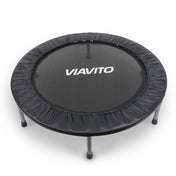The term ‘Couch to 5K’ is a common one these days and has brought to the fore the concept that anyone can, from a standing start, train themselves to comfortably run a 5K distance in a matter of weeks.
So if you’re relatively fit, in a similar timeframe it stands to reason that you could get yourself beyond 5K, up to 10K or more, and after that a marathon or two would be in your grasp.
It’s true that people of all ages, if they stick to a training schedule, can bring on their running endurance in 6 weeks by leaps and bounds. And having a particular event to train for when there is only a matter of weeks to go is a great way to focus the mind.
So if you want to rise to the challenge, here is our guide:
1. Find your stride
It’s a fallacy that long legs make you a better runner, in fact those with shorter limbs tend to adapt better to distance running training because their natural gait is tighter. Elite athletes typically take 30 more steps each minute than amateur runners.
Short sweet strides are the way to go as they limit the impact, which protects the joints. They also use up less energy collectively than longer strides over the same distance meaning you’ve got more reserves to get you to the distance.
The technique you use is also crucial. Short strides mean you keep your feet beneath you and land on the midfoot. This is a very efficient and low impact way of running.

2. Pace yourself, don’t race yourself
5K and other long runs are about distance not speed, and as you progress in your training program you should find your runs become quicker but avoid making speed the primary objective. If you go too fast, particularly in the early stages of training you’ll burn up your immediate energy supply and may end up trying to run on empty to complete a distance.
That said, you will find that most training programs use speed to build stamina, with many including interval training programs that vary speed and duration of segments gradually building to a top-end speed with little or no rest.
3. Diarise your training
If you’re committed to the goal you need to commit to a program. And the further you want to run, the longer the training sessions are going to be.
For these reasons it is essential that you commit to a program and build it into your schedule as you do every other commitment. If you’re only training for six weeks then skipping a session here and there is a significant shortfall in what is required and may mean that when the big day comes you can’t go the distance.
4. Rest to recover
And counter to dodging training, there is the danger of avoiding rest days. Running, like most exercises, gives you a sense of wellbeing and relatively early on in the program you will be feeling so much better for it. The running itself will release feel-good endorphins around your system, you may lose a few excess pounds and you will without a doubt be feeling more motivated.
As a result, it will be likely that you’ll want to do more than the program subscribes. But the rest days serve a purpose, they allow your body valuable recovery time so avoid over-training and do rest or take a relaxing Yoga class or an easy walk as an alternative.

5. Take on non-running training
Running regularly is not all you need to do to get better at running. Enhance your treadmill and running training with leg strengthening exercises like squats and lunges, core conditioning practices like Pilates and stretching disciplines like Hatha Yoga.
6. Get ready to run
Couch to 5K
It may seem daunting but your six-week program will feature paced runs, moderate intensity interval training, cross training and alternate rest and active recovery days (power walking) throughout. Stick to it and you’ll soon find your endurance improves within the first fortnight, giving you the motivation to see it through to the end.
5K to 10K
In eight weeks this mix of hills, higher intensity interval training and longer runs with fewer rests will boost you to achieve the bigger distance.
Half Marathon in 12 Weeks
You need to be pretty fit from the outset and have four available days to train – sometimes for fairly long periods – every week. Alternate weeks will have different focuses sometimes speed, sometimes stamina, sometimes strength. As you focus on one your body is able to recover from the fatigue of the others.
Need some running gear to get your ‘Couch to 5K’ regime started? Then head to our store’s running department here to check out our wide range of running and training shoes, accessories and equipment.

